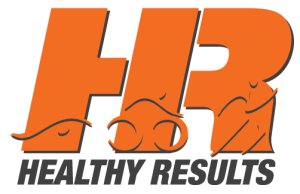Triathletes and Injury
By Coach and Dr. Cindy
Because of the three sports, and therefore the decreased volume in a particular sport as compared to a single sport athlete, triathletes tend to experience injuries that put them on the sidelines less often than those who do only one sport. However, based on my experience in practice as a Chiropractor treating primarily endurance athletes, triathletes often present with nagging chronic issues that they can work through but which ultimately set them back in terms of how much quality training they are able to do – and therefore how fast they can go come race day.
Some of the most common injuries that I see in Triathletes include:
1. Piriformis Syndrome – Presents as a nagging pain in the glute area, often as an “ache” that just won’t go away. Often worse with sitting and occasionally sends some ache down the back of the thigh. Most often related to weakness in the glutes and/or hip flexors that changes the biomechanics of the hip, increasing the workload of the piriformis.
2. Hip Flexor Tendinitis – Local pain at the front of the hip. Pain that you can put your finger on and that can be reproduced with hip flexion and often with stabilization required to stand on one leg. This can be chronic and can be difficult to go away because of the many structures around the hip joint that can be involved in causing this problem in the first place – including weakness in the glutes and/or hip flexors.
3. Patellofemoral Pain Syndrome – Presents as diffuse pain around or under the knee cap, rather than pain you can point to with one finger. Achey pain that can occasionally be sharp pain with activity. The pain is related to tightness or dysfunction in the quads, hamstrings, adductors and/or glutes that causes a problem with tracking of the patella (knee cap) when the knee flexes
4. Iliotibial Band Syndrome – Presents most often as pain located lateral to the patella that you can put a finger on. Often presents at a specific/predictable duration during a workout and makes it difficult to continue the activity. Most often related to weakness in the glutes and/or hip flexors that causes the tensor fascia latae muscle to increase it’s pull on the IT band.
5. Plantar Fasciitis – Presents as pain on the bottom of the foot, most often at the anteromedial portion of the heel. Caused by the plantar fascia pulling too hard at that insertion point. Most often presents as pain first thing in the morning and after a period of rest that gets a little bit better once it is warmed up. Plantar Fasciitis can be related to hypertonicity in the calf muscles, flat feet or overpronation, improper footwear and/or dysfunction of the ankle joint. The important thing for triathletes is to make sure we stay healthy and injury free by staying strong and balanced – so we can prevent these issues from occurring in the first place. A proper strength and prehab program is important to make sure our bodies can withstand the constant stress and repetition of swimming, cycling and running. A program should include exercises that focus on hip and core strength – both of which will help make sure undue stress is not placed on other structures throughout
Coach Cindy is a Chiropractor and Personal Trainer as well as a Triathlon, Cycling and Running Coach with HRT.
She coaches athletes around North America and also works with athletes in Toronto and the Burlington/Oakville area as a Chiropractor and one-on-one trainer to keep them healthy and strong! You can contact her at cindylewis600@hotmail.com.





